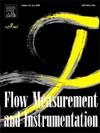Discharge prediction model for flow through differential weir-gate structures
IF 2.3
3区 工程技术
Q2 ENGINEERING, MECHANICAL
引用次数: 0
Abstract
This study experimentally investigates a weir-gate structure that combines a rectangular opening at the base of a rectangular sharp-crested weir. This device integrates the functions of individual weirs and gates while addressing the challenges associated with each. The reported literature lacks investigations on rectangular sharp crested weir-gates with varying weir crest lengths and gate openings. To address this gap, the current study explored the hydraulic performance of such uniquely configured weir-gate structures, herein named as Differential Weir-Gates (DWG). The objective was to develop a discharge prediction model applicable to DWG (simultaneous overflow and underflow), as well as to individual weir (only overflow) and gate (only underflow) scenarios. Experiments have been conducted on 29 different DWG models with variations in weir height, gate opening, and length of weir crest. A functional relationship was established using combination of the dimensional analysis and the continuity equation. Finally, the proposed discharge model was developed through Multiple Linear Regression (MLR), demonstrating relative errors under ±10 % with an absolute mean relative error of 1.71 %. The proposed model was further evaluated using statistical indices including Coefficient of Determination (R2), Root Mean Squared Error (RMSE), and Kling-Gupta Efficiency (KGE). In comparison to the limited existing discharge models in the literature, the proposed discharge model exhibited better accuracy in predicting discharge. The proposed discharge model was slightly modified to accurately predict the discharge through a weir-gate having trapezoidal weir and rectangular gate sections as well. The surface tension effects were observed to be dominant for lower values of Weber numbers. Overall investigations indicated that the proposed discharge model can be used for accurate discharge predictions of individual weir, individual gate, and DWG with both rectangular and trapezoidal weir sections for the range of variables investigated in present study. This versatility offers significant advantage for hydraulic engineers working with weir-gates.
求助全文
约1分钟内获得全文
求助全文
来源期刊

Flow Measurement and Instrumentation
工程技术-工程:机械
CiteScore
4.30
自引率
13.60%
发文量
123
审稿时长
6 months
期刊介绍:
Flow Measurement and Instrumentation is dedicated to disseminating the latest research results on all aspects of flow measurement, in both closed conduits and open channels. The design of flow measurement systems involves a wide variety of multidisciplinary activities including modelling the flow sensor, the fluid flow and the sensor/fluid interactions through the use of computation techniques; the development of advanced transducer systems and their associated signal processing and the laboratory and field assessment of the overall system under ideal and disturbed conditions.
FMI is the essential forum for critical information exchange, and contributions are particularly encouraged in the following areas of interest:
Modelling: the application of mathematical and computational modelling to the interaction of fluid dynamics with flowmeters, including flowmeter behaviour, improved flowmeter design and installation problems. Application of CAD/CAE techniques to flowmeter modelling are eligible.
Design and development: the detailed design of the flowmeter head and/or signal processing aspects of novel flowmeters. Emphasis is given to papers identifying new sensor configurations, multisensor flow measurement systems, non-intrusive flow metering techniques and the application of microelectronic techniques in smart or intelligent systems.
Calibration techniques: including descriptions of new or existing calibration facilities and techniques, calibration data from different flowmeter types, and calibration intercomparison data from different laboratories.
Installation effect data: dealing with the effects of non-ideal flow conditions on flowmeters. Papers combining a theoretical understanding of flowmeter behaviour with experimental work are particularly welcome.
 求助内容:
求助内容: 应助结果提醒方式:
应助结果提醒方式:


